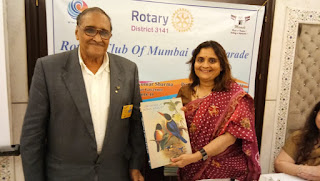Mumbai of 21st century
So Much of chaos all around Mumbai most of us are cursing Metro 3 work. If one study the entire plan and the scene after 20 years, undoubtedly they will salute this idea.
Speaker meeting with Metro Man S.K.Gupta was something like that.An eyeopening talks make us understand the situation.
A Joint meeting was held by RC MUMBAI CUFFE PARADE and RC DOWNTOWN SEA LAND at 20 Downtown , Churchgate.
After being in government’s pipeline for many years Metro 3 or Colaba-Bandra-Speez Metro
The city’s first underground metro corridor that would connect Colaba with SEEPZ via Bandra will have trains with eight coaches and not six because the Mumbai Metro Rail Corporation (MMRC) has estimated a surge in the number of passengers if the project is completed by 2020. It will carryy 3000 commuters in one go. This will solve environmental issues. Metro 3 also referred as Colaba-Bandra-Seepz Metro, is a part of the metro system for the city of Mumbai. When completed, the 33.5-km long line will be the first underground metro line in Mumbai. The metro line will connect Cuffe Parade business district in the extreme south of the city to SEEPZ in the north-central with 26 underground and one at-grade station. The cost of this corridor is estimated at Rs 23,136 crore.
Tunnel Boring Machines (TBM) will excavate the mainlines. TBM are huge machines that will be lowered at some distance from the river with the help of a heavy duty crane through shafts and will drill twin tunnels below the riverbed. And the New Austrian Tunneling Method (NATM) will be used for two tunnels for the stabling line and connecting it to the main line. NATM technology is generally used to create tunnels of smaller lengths. NATM technology will be used for the first time underwater.
Special measures will also be taken during excavation, which includes strengthening the weak and broken rock to improve the geological structure and reducing the permeability. From a depth of 12-13 metres from the river bed a stabling line will be laid. This line will be used for stabling and reversing of trains which will end at the BKC station. MMRC has chosen BKC station for the stabling line due the bigger space and less amount of traffic. The construction of this 1.2km rail line faces major challenges, MMRC assures that after completing the construction it will be safe to travel.





Comments
Post a Comment